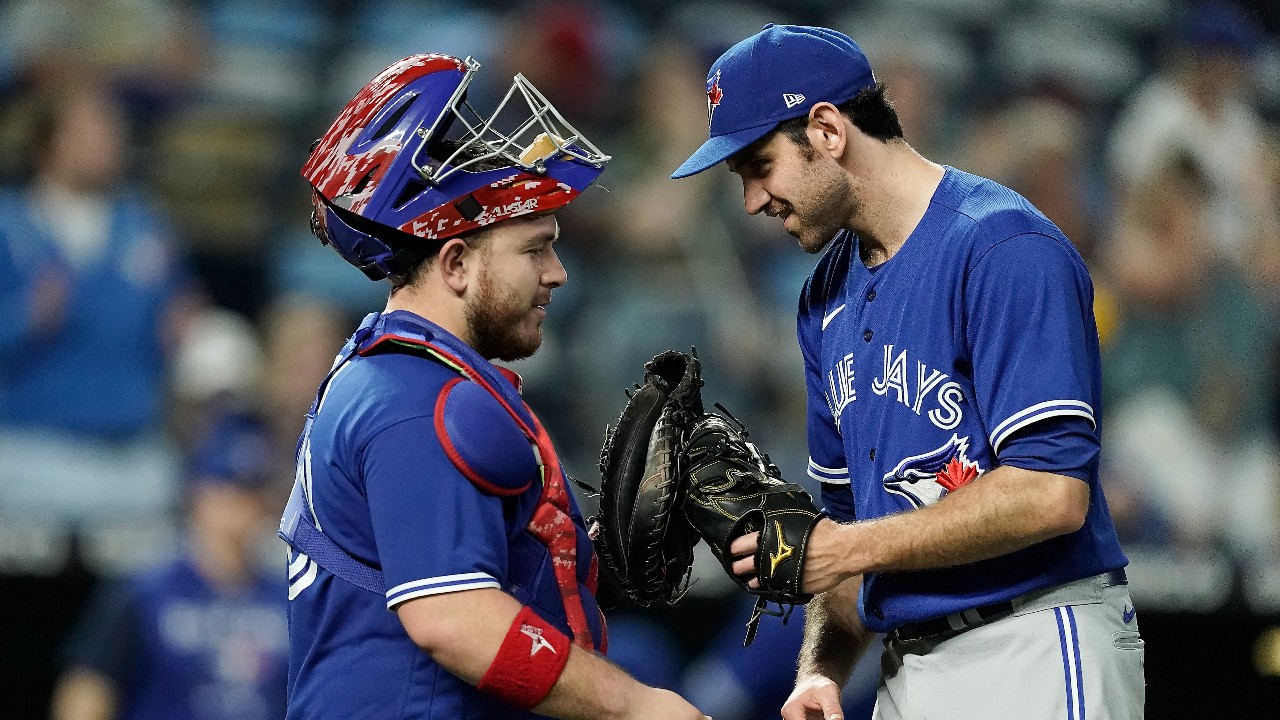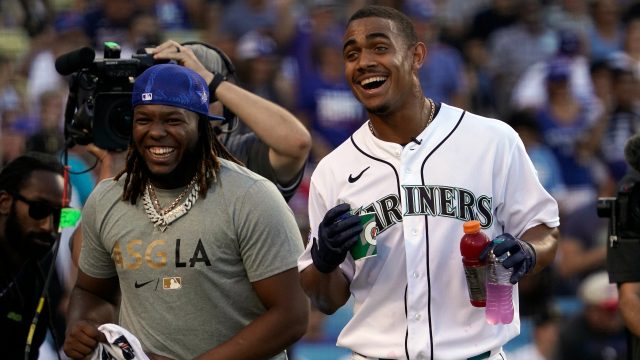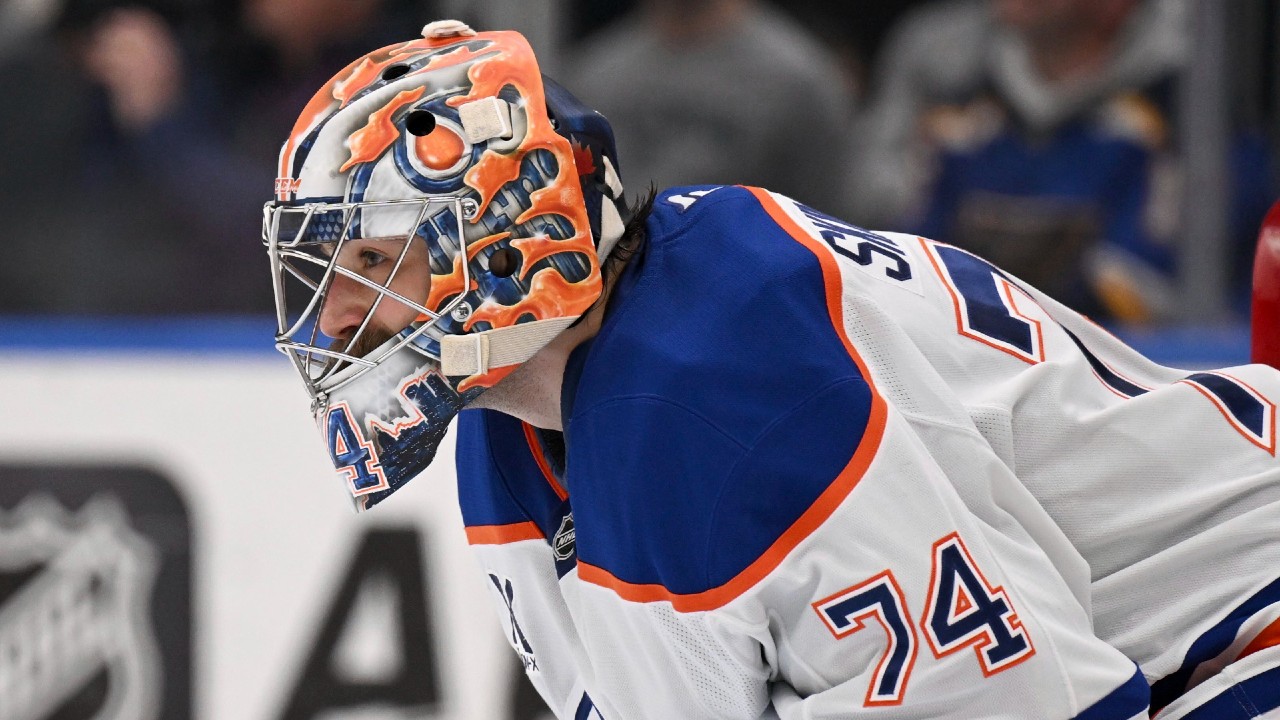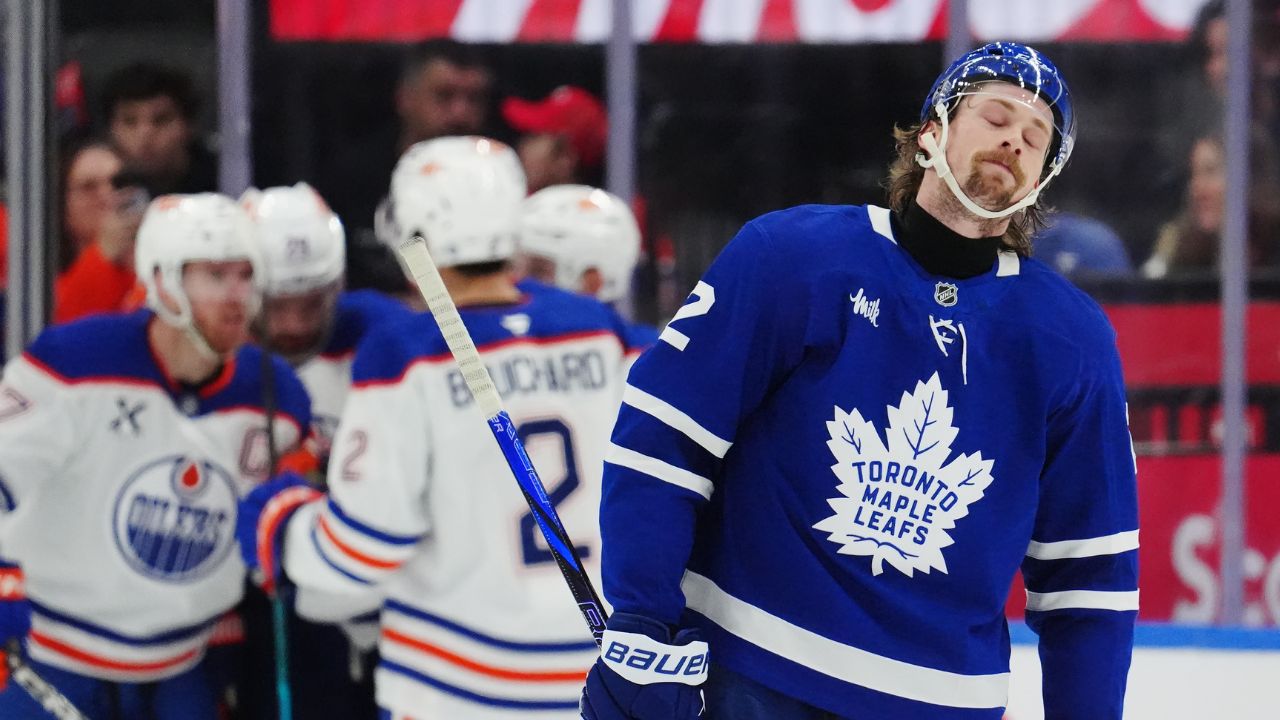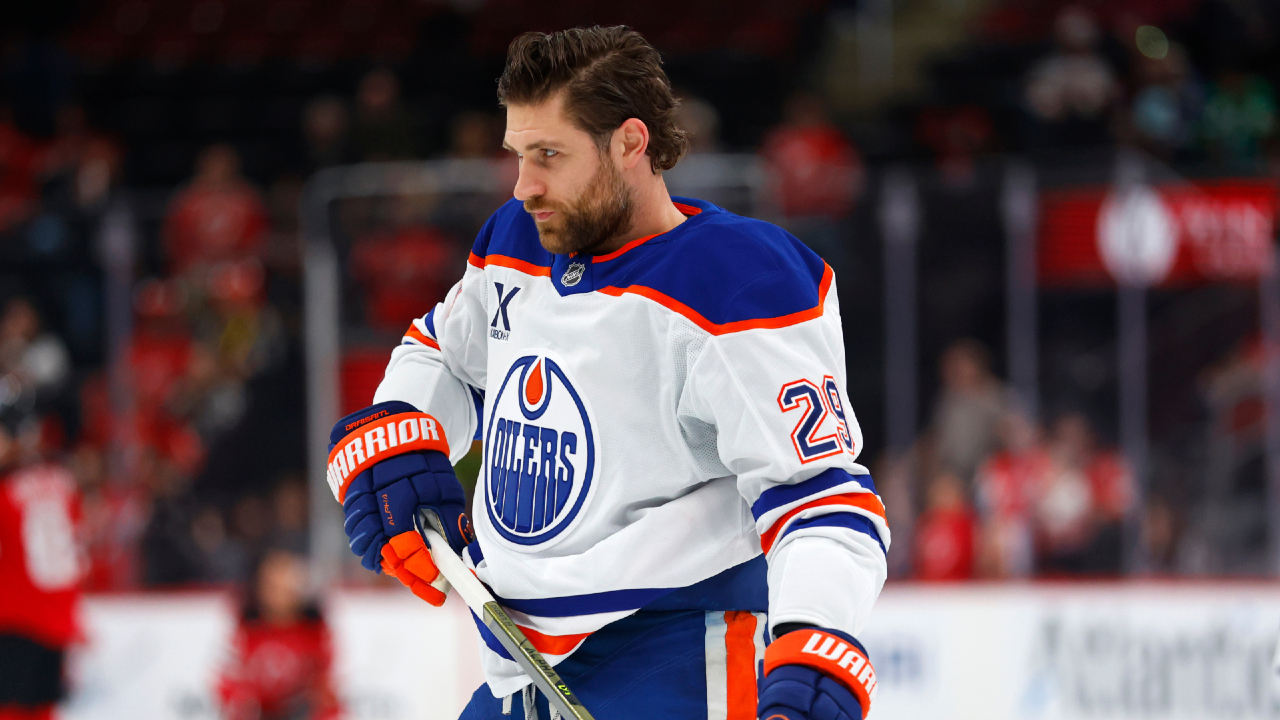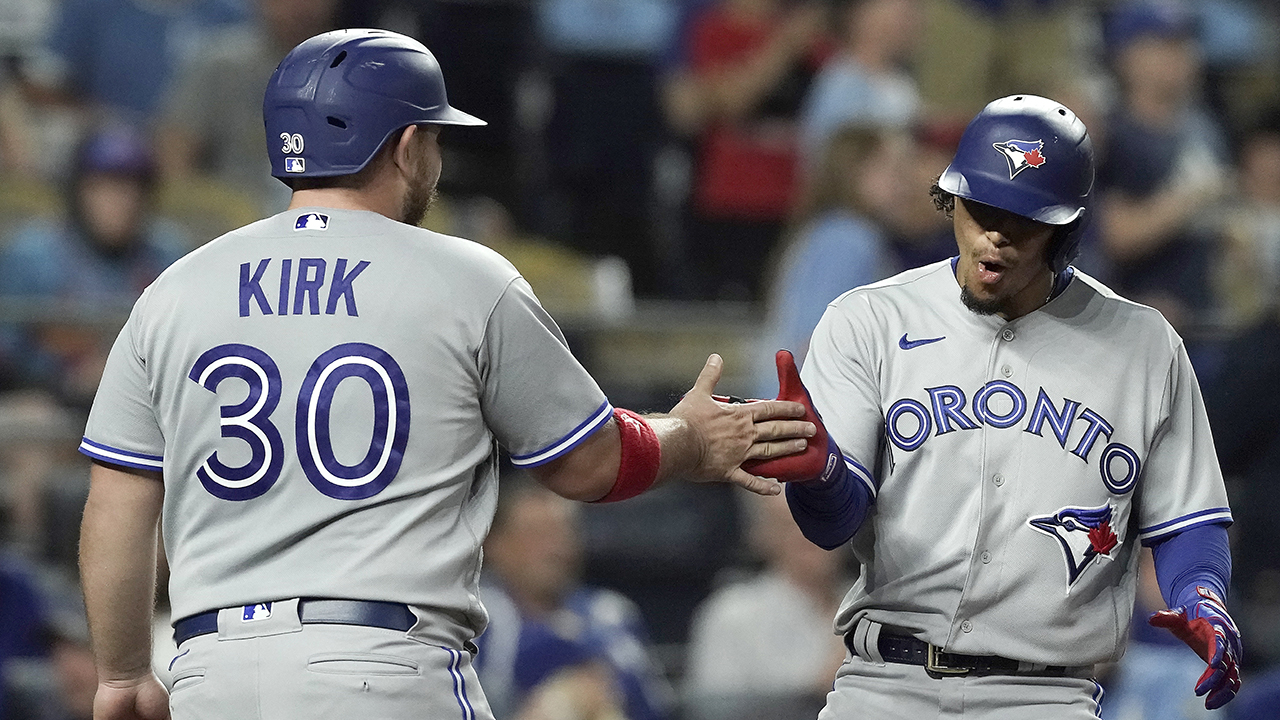
LOS ANGELES – Over the winter, as Santiago Espinal went through a gruelling weight-training regimen and fielding practice schedule, he had a vision for how all that work would play out on the field for him.
The extra strength would allow him to drive the ball more often, better leveraging his ability to make to contact. The defensive work would make him more reliable in the field at multiple positions, which was crucial when he didn’t know if he’d be at second, third or all over the diamond.
Once the season began, both played out exactly to plan, culminating in his first all-star game appearance.
“I’m going to tell you the truth – I didn’t know that it was going to be this close (to the vision),” says Espinal. “I knew for sure that I was going to do a good job. I knew for sure that I was going to be ready for any opportunity. I’m not afraid of anything. And I’m always going to be working hard. I always believed in myself. In the off-season, I put in the work to make sure when I get to spring training, when I get to the season, I get to play this game and I get to have that opportunity to let the team get the W.”

Every off-season players across baseball seek out adjustments or tweaks to unlock their potential and deliver better results on the field. It is rare those changes work out as effectively as they did for Espinal or his Toronto Blue Jays teammate Alejandro Kirk, another first-time all-star.
Among the six Blue Jays named to the American League squad for the 92nd Midsummer Classic, they have made the biggest leaps forward, although closer Jordan Romano has certainly taken his 2021 success to another level.
In exceeding projections, they’ve helped float the Blue Jays through the early-season struggles of others, helping the club to a 50-43 record and possession of the third wild-card spot. Without them, the tumult of recent weeks would likely have come far earlier.
“I’d say the key here is to make adjustments – that’s what I always have on my mind,” Kirk, speaking through interpreter Hector Lebron, says of his progression. “It’s not easy, but you have to do it. If you don’t make adjustments in this sport, you’re going to be in trouble. But so far, all my hard work from the off-season, spring training, I think I’m there. Of course, I’ve got to continue to keep working hard and improve a couple of things, but I’m very happy and very pleased as of right now.”
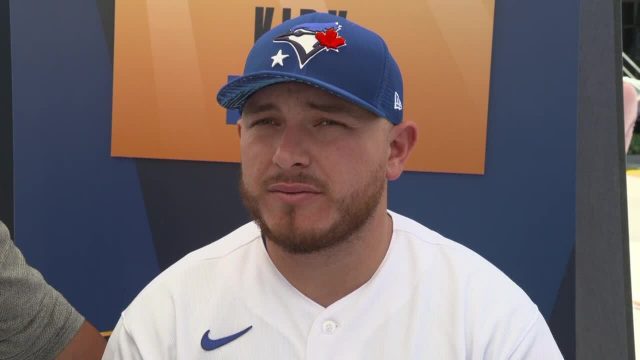
For Espinal, the extra strength has allowed him to increase his average exit velocity from 84.8 m.p.h. last year to 86.8 this year. And combined with his bat-to-ball skills, his hard hit percentage has jumped from 22.8 per cent to 33.8. He’s in the 91st percentile for whiff rate, 86th percentile for expected batting average and 95th percentile in outs above average, a metric that measures defensive quality relative to his peers.
He couldn’t possibly have drawn it up any better.
The same goes for Kirk, whose play both behind and at the plate has been “stabilizing” in the words of interim manager John Schneider, who when asked how far the 23-year-old has exceeded internal expectations, replies, “very.”
Kirk’s average exit velocity of 91.5 m.p.h. is in the 89th percentile, his strikeout rate of 9.5 per cent is in the 99th percentile while his expected batting average is 98th percentile. Defensively, his pitch framing is in the 93rd percentile.
“Offensively, when you look at all the things that go into that equation, he has them,” says Schneider. “The way he’s sustaining it has been phenomenal. The way that he’s almost exceeded them has been phenomenal. He’s got a ton of infield hits, which we didn’t see coming, and I think it’s just a credit to him to having that consistent approach and when he’s going well, not getting off of that, not trying to chase hits. He’s been awesome.”
The same goes for Romano, who was drafted in 2014 out of Oral Roberts where he was a closer and after Tommy John surgery, was stretched out as a starter. He spent three-plus seasons in the rotation before returning to the bullpen in 2019, eventually earning a brief look in the majors.
During the pandemic summer of 2020, he firmed up a place in the bullpen and earned a couple of saves before a finger injury ended his season, took another step last year and this year has an American-League leading 20 saves in 23 chances.
“I enjoyed starting and it’s almost like I wanted to prove that I can make it as a starter,” he says. “But probably ’17, ’18 and ’19, I wanted to be in the bullpen. That’s where I thought I fit the best. They always wanted me to throw the changeup so we tried that for a few years and it never worked. But the bullpen is where I feel like I belong.”
Even in the midst of an all-star campaign, Romano isn’t static.
In the second-last game before the all-star break, for instance, he surrendered a two-run homer in the 10th inning to Vinnie Pasquantino on a slider and the next day, began throwing the pitch a bit harder. The contrast was immediate as the offering looked much sharper and at 89.9 m.p.h, was noticeably above his season-average of 86.9 and in the rematch, Pasquantino swung through one for strike three.
“I gave up the homer and that slider, I threw it with confidence, but I felt like I was trying to place it a little bit too much, you know?” says Romano. “The next day, I’m just like, you know what, I’m just going to rip it to a spot, have confidence in it and it played better than a lot of the other days. That’s going to be my thing going forward, just rip it to a spot, don’t try to place it anywhere and see what happens.”

Trusting in himself and seeing what happens is something Vladimir Guerrero Jr. is intent on doing out of the all-star break. In some ways, he’s worn the burden of unmet expectations more than most around the team, despite a .271/.346/.484 batting line with 20 homers and 57 RBIs.
An MVP calibre 2021 may have skewed the demands on him and at separate points this season teammates George Springer and Teoscar Hernandez have pulled him aside and told him to make a point of enjoying himself more.
In Monday’s home run derby, he cut loose, playing hypeman to Julio Rodriguez during the Seattle Mariners rookie’s sensational first round, chumming it up with Albert Pujols and eventual champion Juan Soto. Still, Guerrero’s often sunny disposition masks his fierce competitiveness – he’s all about winning – and winning fuels his joie de vivre.
“I feel pretty good about the first half,” he says through Lebron. “It’s been a lot of ups and downs. We all know that. But it’s a game of adjustments. I see myself having a good second half.”
Having faith in that often comes down to the quality of work a player puts in. The best of plans in the off-season can work out the way they did for Espinal and Kirk, can be a base to make adjustments off of like for Guerrero or to carry performance through the year like for Romano and ace Alek Manoah.
The 24-year-old right-hander put himself on an all-star trajectory last year and this year has fulfilled that path with his first AL nod. In his mind, all someone can do is position himself for success and then see where things go.
“You don’t want to put all your eggs in one basket, like, hey, I worked hard, I should perform well because sometimes that’s just not how it works,” says Manoah. “Baseball is a really hard game and sometimes it tests you. Having the confidence in myself because I know how hard I worked allows me to go out there and just play free and trust myself. If it doesn’t work out, then I’m going to keep working my tail off and it will work out.”
The all-star selection for him and his teammates is testament to that.


